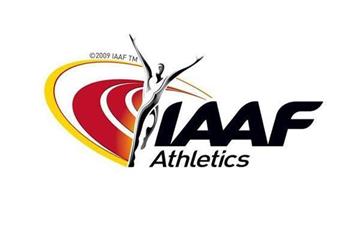While the athletes run at night, the coaches meet in the morning.
At the IAAF Coaches Conference on Tuesday morning at the Hilton hotel in Canary Wharf, moderator Gunter Lange set the stage for a series of coaching developments lectures. He introduced a series of IAAF coaching representatives to discuss the science behind strength development in athletes, and how to apply it.
Throws coach Shaun Pickering led Tuesday’s session, tackling issues surrounding various strength training for throwers. The former heavy throws lead for UK Athletics laid out IAAF’s model for training success.
“It’s athlete-centred, then science-based, then coach-driven,” he said. “We all care about the athlete, and the science is out there to help them. We just need the coaches to properly apply the science.”
Pickering, a 1996 shot put Olympian for Great Britain and Northern Ireland, frequently referenced the ‘hill equation’ to anchor his points.
“The force a muscle produces decreases as the speed of muscle contraction increases,” he said. Basically, the faster you apply your strength, the less effective it is.
Pickering proceeded to go over various exercise strategies, from upper body to lower body. The focus was always on the “fast-twitch” lifts, or the emphasis on more repetitions at lesser weight with faster velocities.
“If you just slowly bench press,” he said, “you aren’t properly applying strength to the technique of throwing.”
He spent the rest of the lecture praising Olympic lifts, or quick lifts of barbells loaded with weight plates.
“I look for athletes that are explosive and quick,” said Jamaican throwing coach Julian Robinson.
Jamaica has seen recent success through Robinson, with O’Dayne Richards grabbing bronze at the 2015 IAAF World Championships with a 21.69m toss.
Next, Lange facilitated a panel’s analysis of Saturday’s men’s discus final. Lithuania’s Andrius Gudzius won the final with a 69.21m throw as Sweden’s Daniel Stahl took the silver medal with 69.19m.
“This was the greatest discus competition of all time,” said Pickering, who contributed to the panel alongside Dale Stevenson, coach to newly crowned world shot put champion Tom Walsh of New Zealand.
“Two men over 69m and the top two separated by two centimetres,” he said. “Simply incredible.”
Pickering and Stevenson analysed the initial steps, the throwing phase, and the final flight patterns.
“I think what’s most important is analysing the release velocities of each thrower,” said Stevenson.
“Each thrower is different. Tall, stocky, long, stubby…everyone requires different steps to optimise their throws. What’s most vital in flight angles and release velocity, however you get there.”
“Take Stahl,” said Pickering. “He is 6ft 7in, so if he doesn’t shorten his steps, he’s going to jump out of the circle (and disqualify his throws).”
Stevenson worked with Walsh to perfect technique in the lead-up to the thrower’s gold medal run.
“We’ve thrown more than I thought we ever would,” said Stevenson. “We had 18 throwing sessions in the past three weeks. Tom is constantly evolving as an athlete, so strength training will happen after today, but the best benefit the past few weeks was perfecting technique.”
Walsh tossed the iron ball 22.14m Sunday night. Practice makes perfect.
The IAAF Coaches Conference continues on Wednesday morning.
Sam Dodge for the IAAF







 Countdown
Countdown





